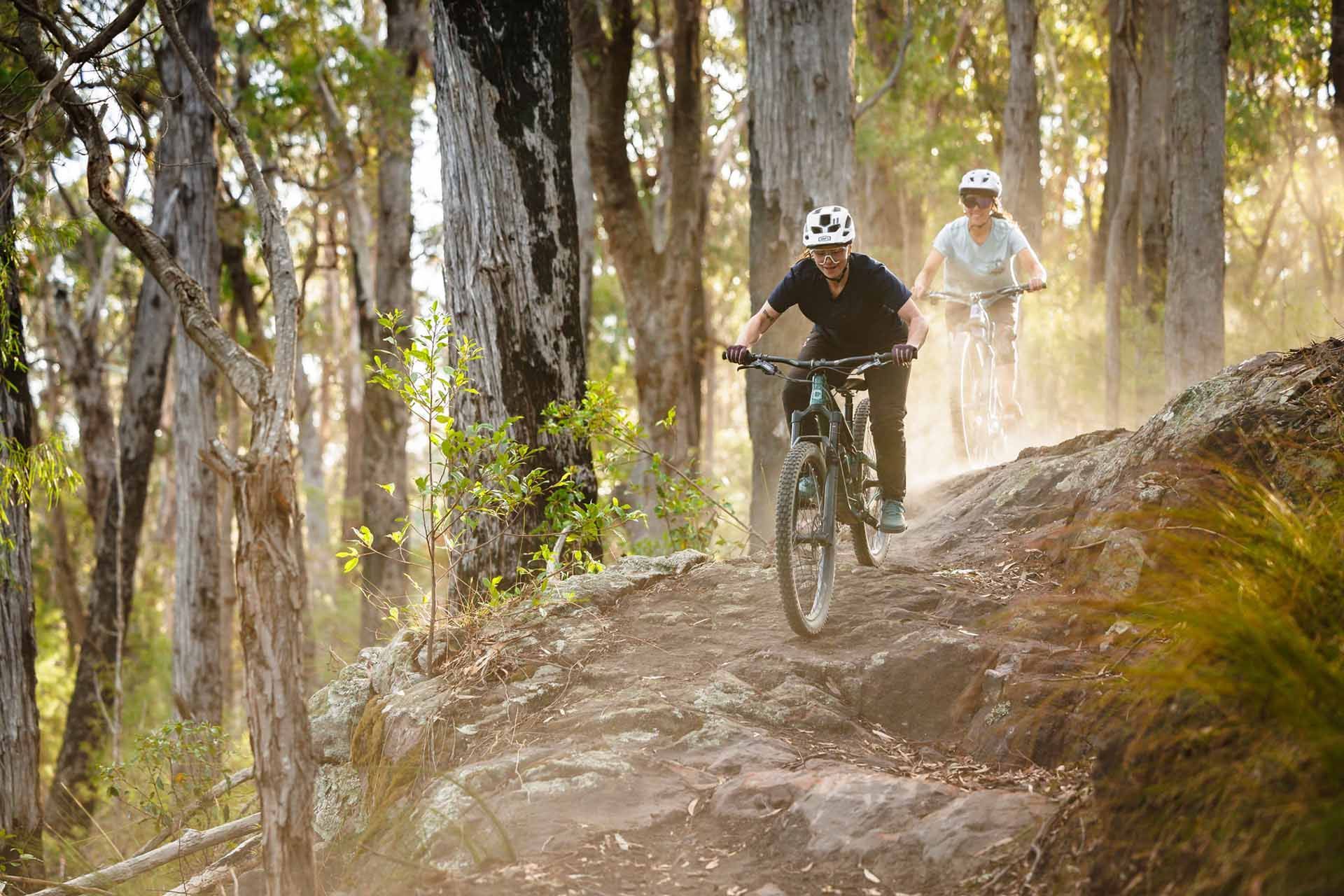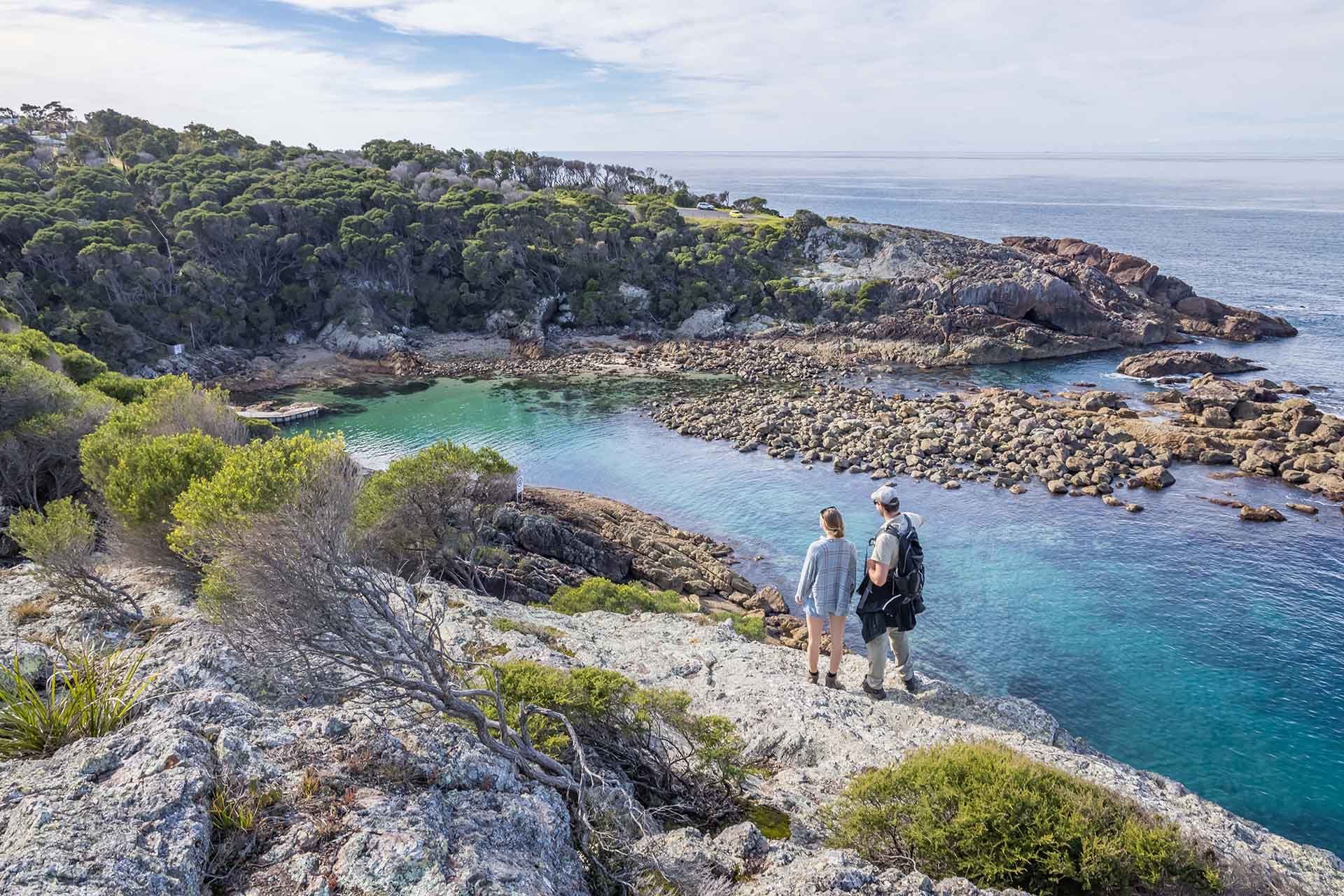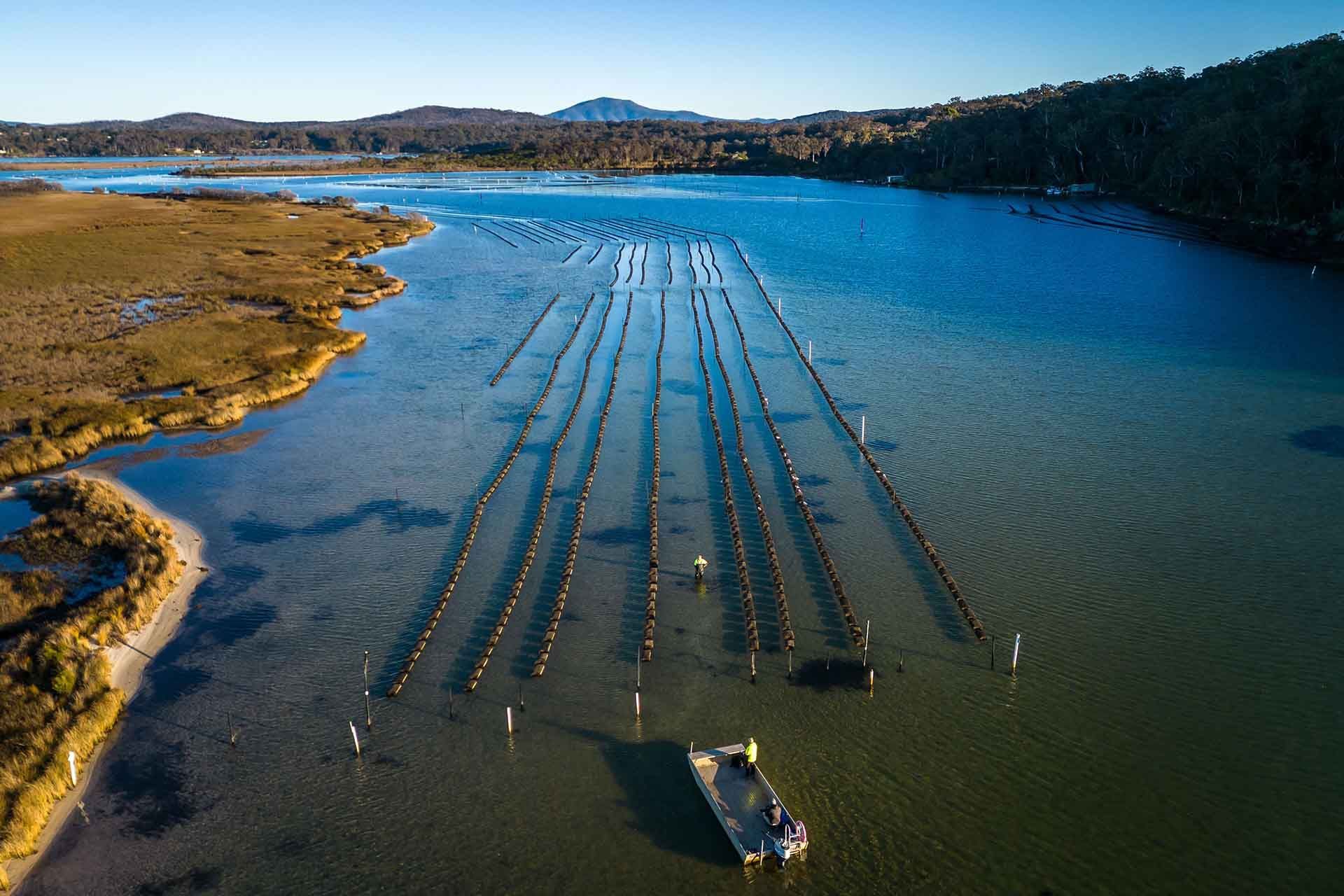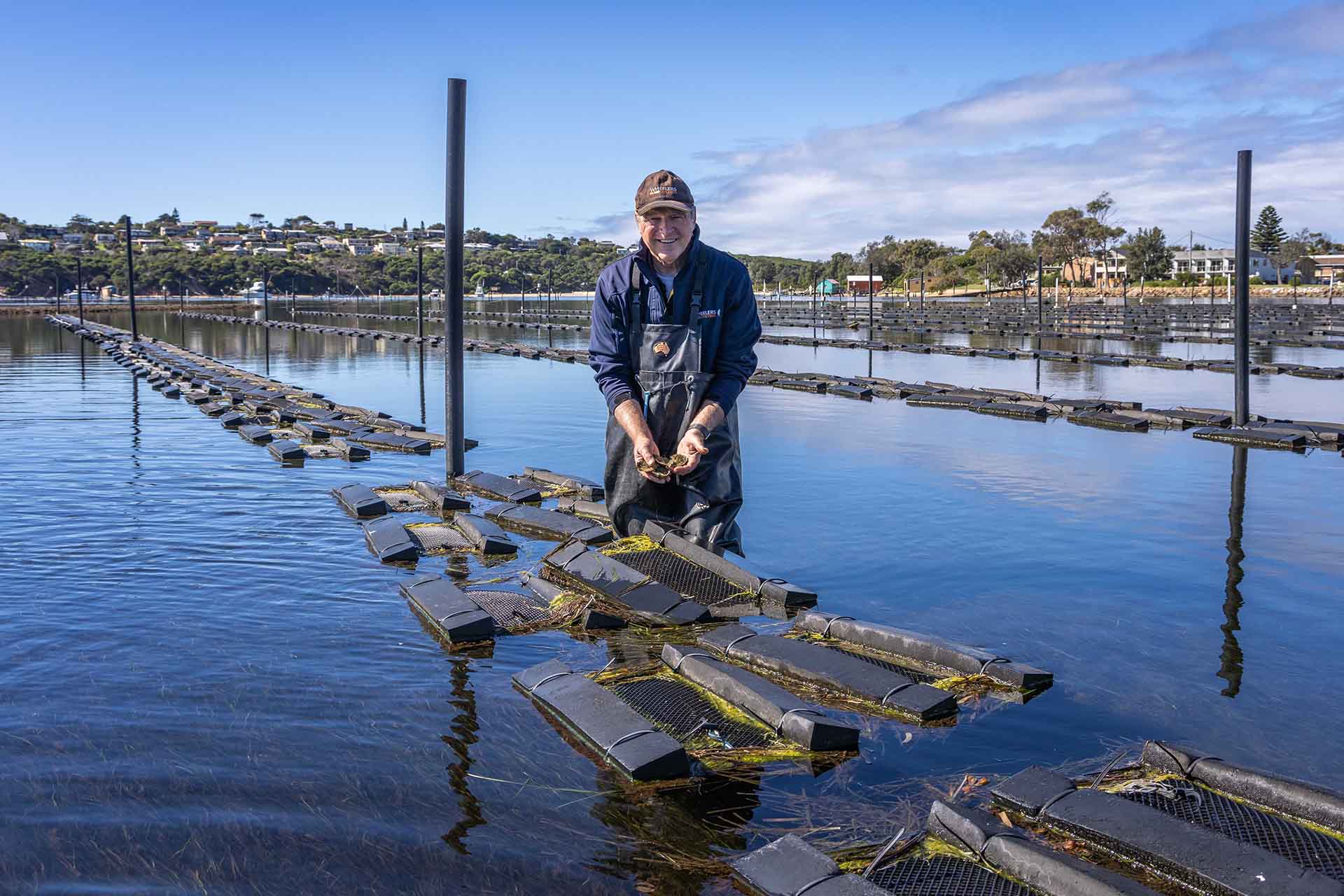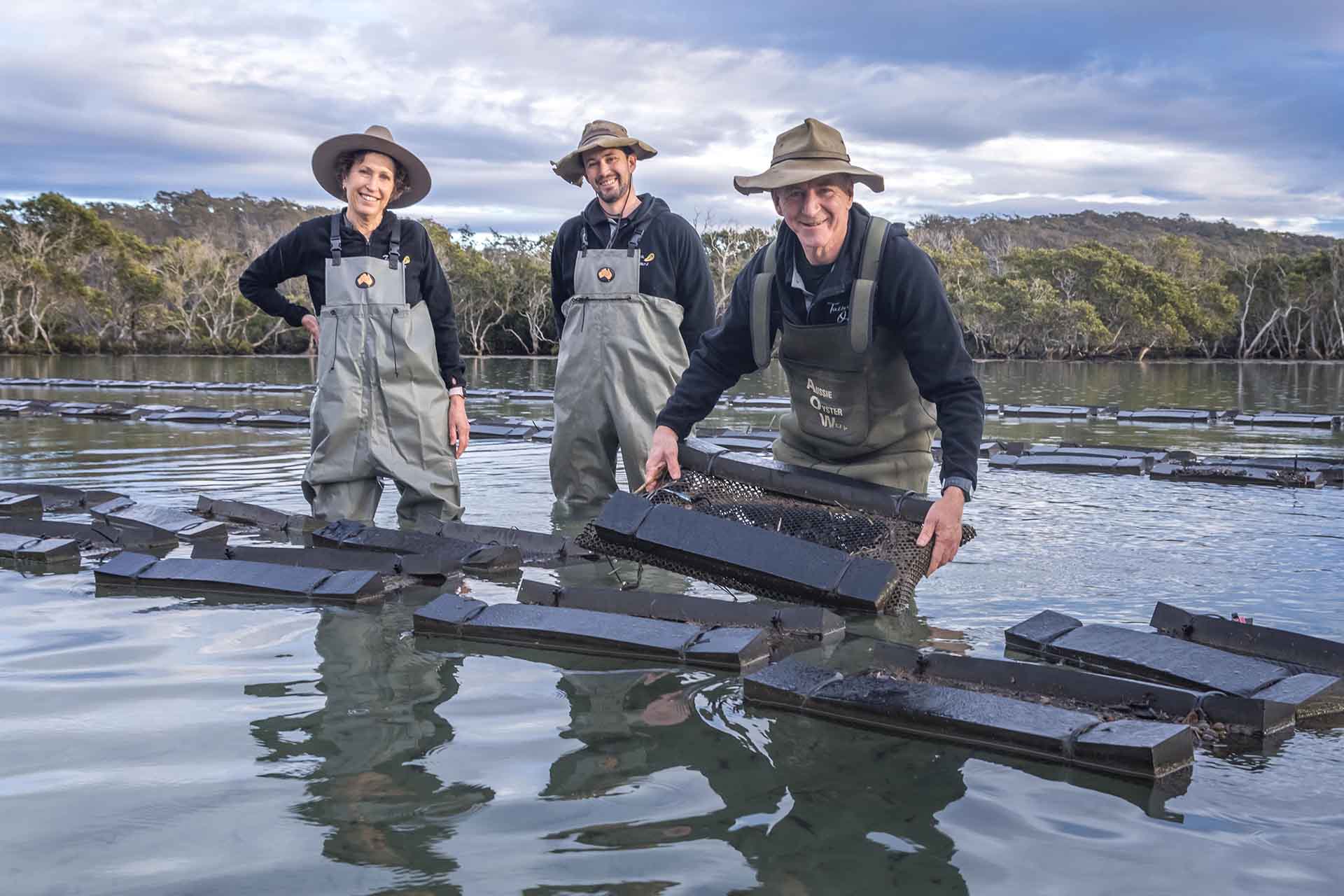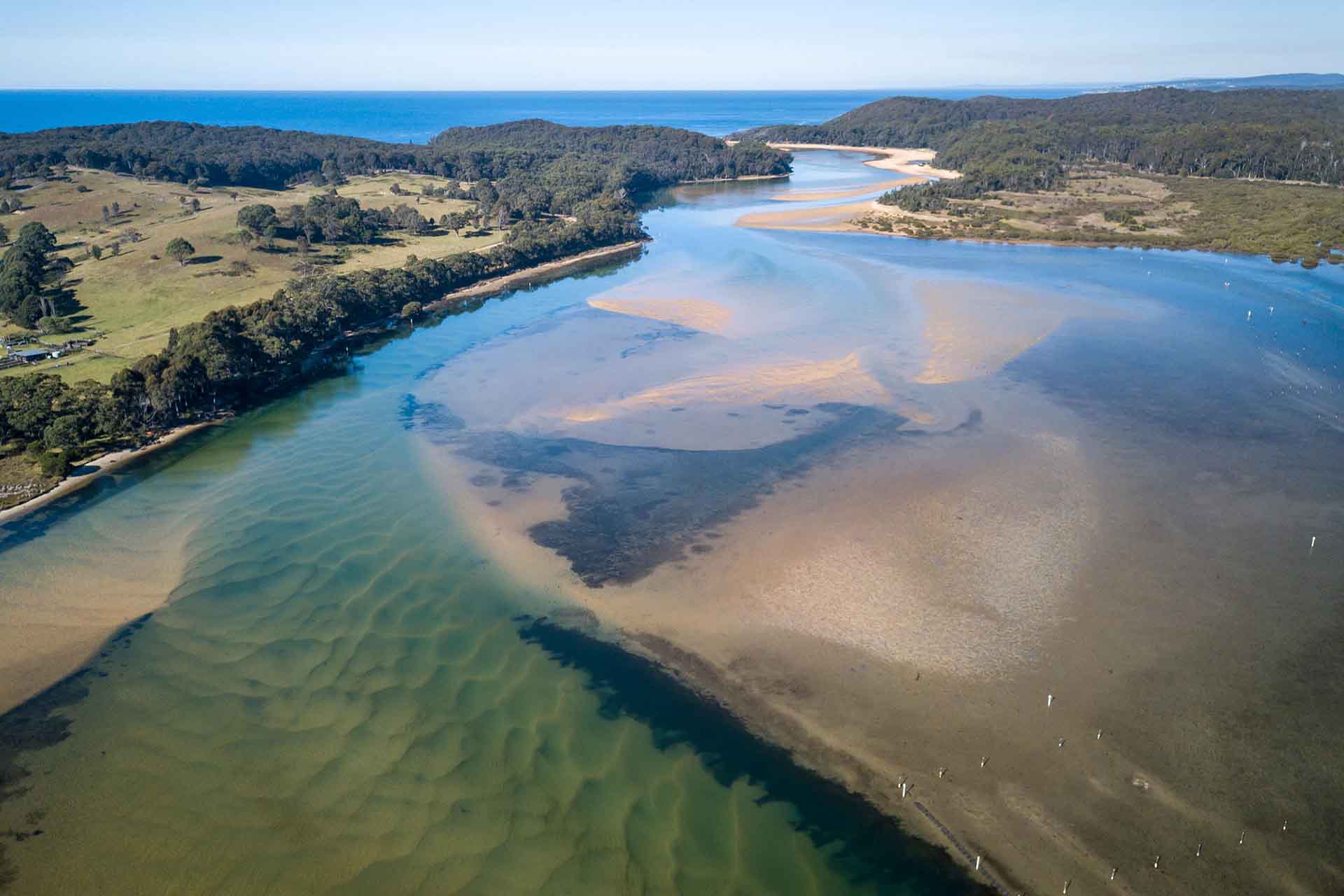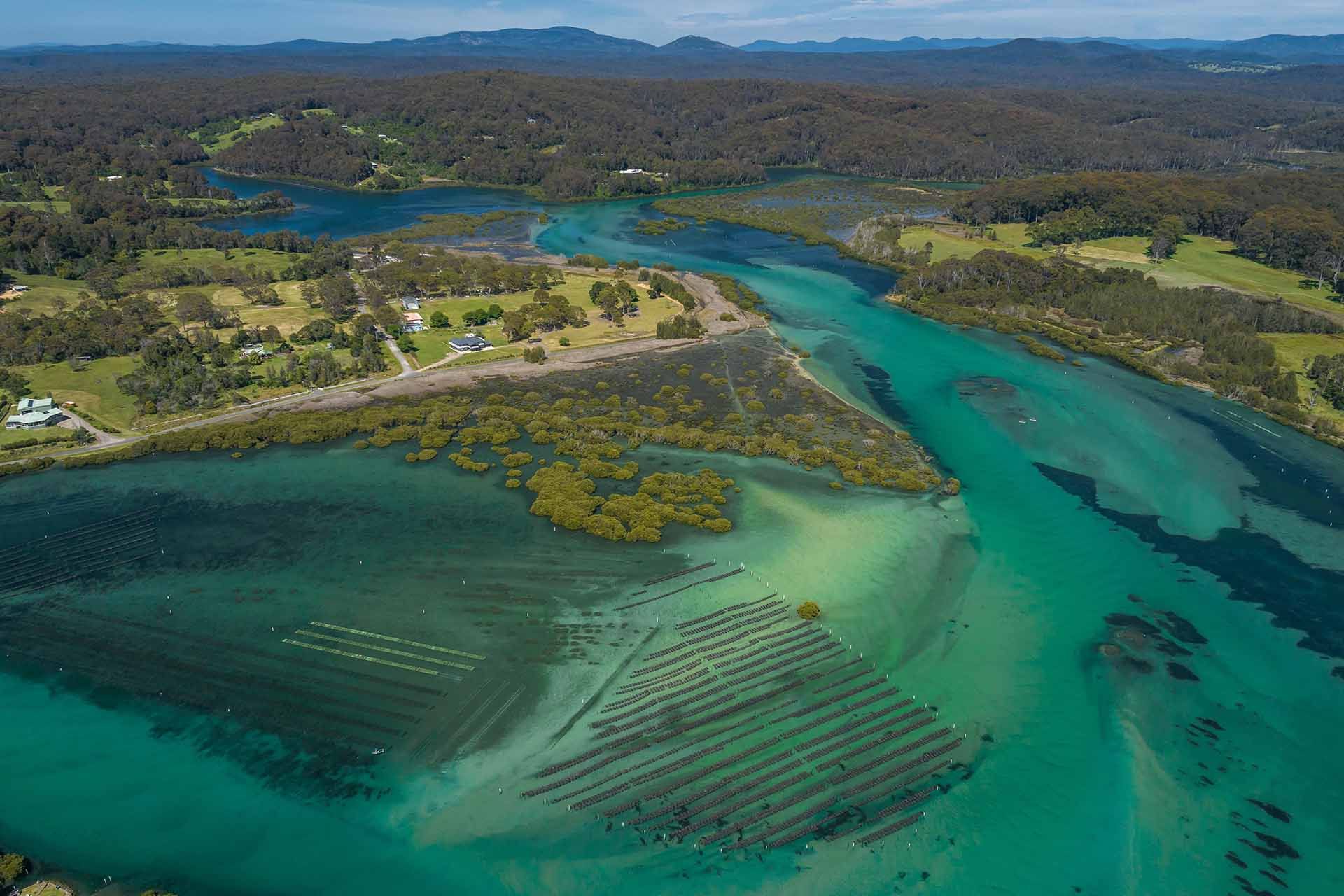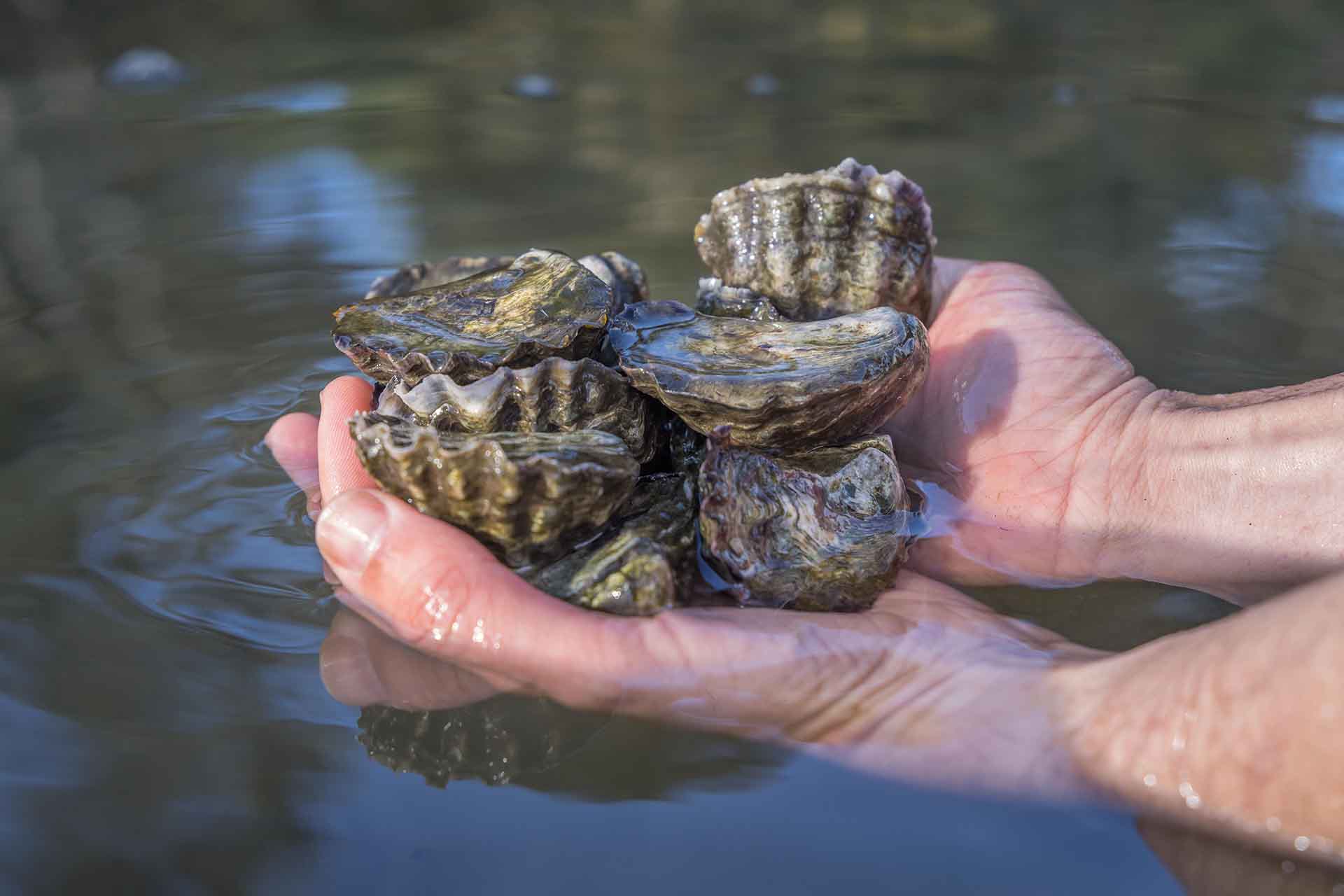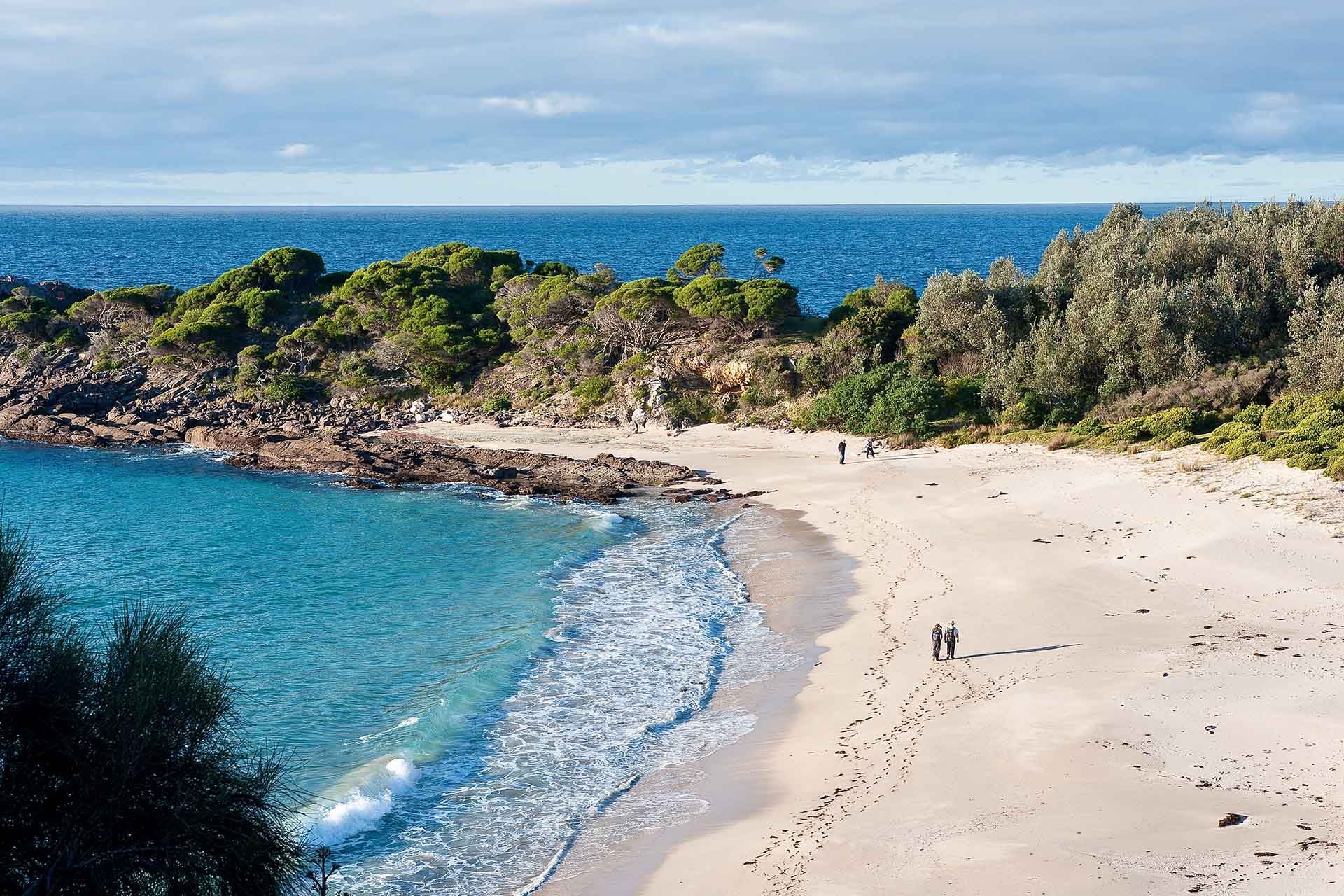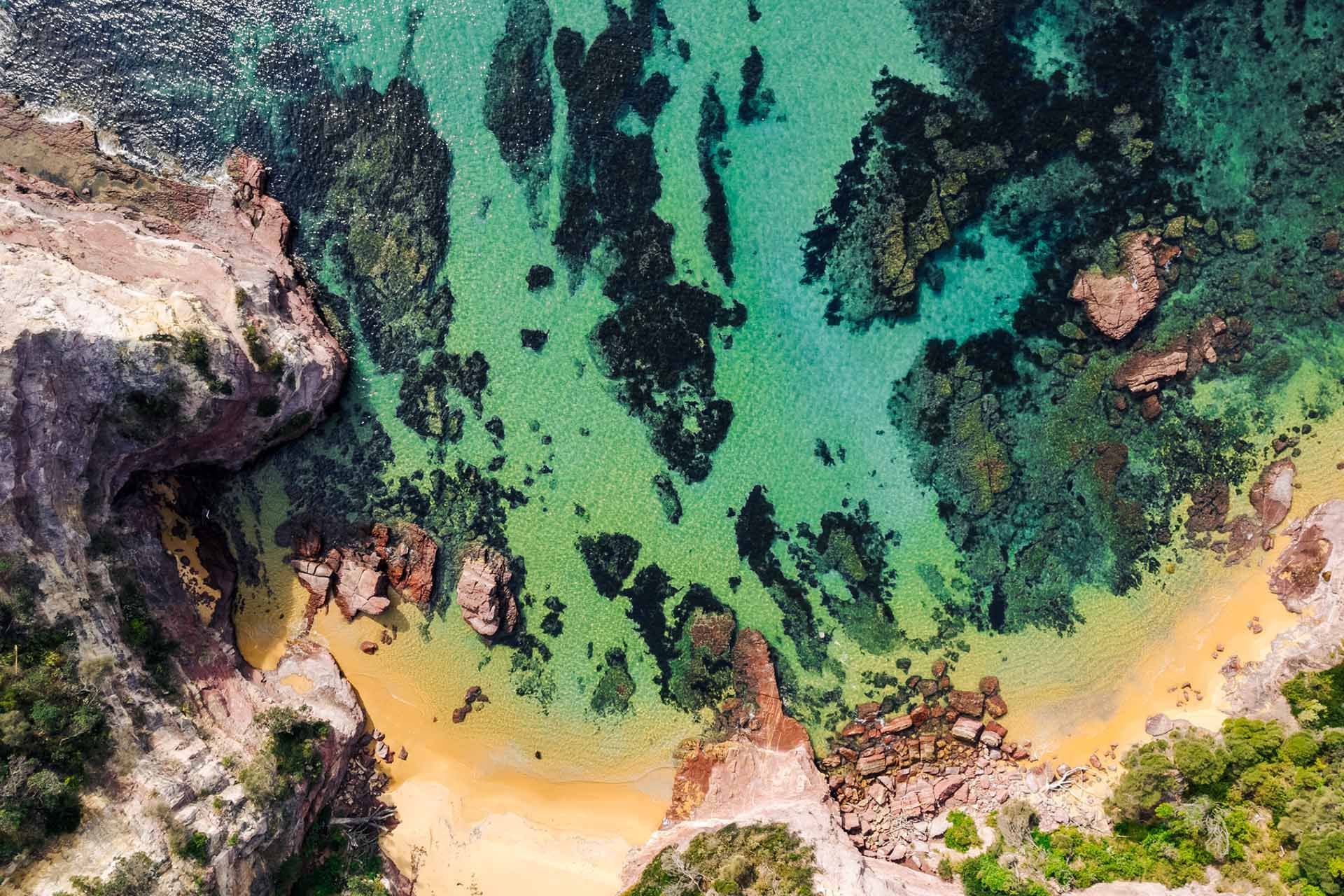Oyster Merroir Tasting Trail
OYSTER FARM GATE ROAD TRIP
The Sapphire Coast is home to Australia's wilderness oysters, with millions harvested from our five key estuaries each year. Oysters from the Sapphire Coast region are highly regarded, thanks to the pristine natural environment in which they are grown. From Wonboyn in the south, to Wapengo in the north, each estuary imbues a unique flavour known as ‘merroir’, reflecting the forests, seabeds and oceanic tides of the environment in which the oyster grew.
Take a road trip along our coast and meet the growers at their farm gates, savour freshly shucked oysters by the water’s edge and explore the stunning coastal wilderness surroundings of each location. Drive at your own pace, include coastal village stops, and take along your own adventure gear for that moment when you fall in love with an estuary or see the promise in an unsealed road that leads to a lagoon or lake. Visit a different location each day, or experience it all in a weekend - it's up to you.
Wonboyn Lake
Located at the very southern tip of New South Wales, Wonboyn Lake is surrounded by the state’s most rugged and untouched coastal wilderness areas. Oysters grown here are creamy and fruity, with low brine and a mild aftertaste thanks to a high freshwater input. The lake is fed by the pristine waters of Wonboyn River, which collects land nutrients as it winds through forested coastal ranges for approximately 10 kilometres. The combination of a low oceanic tidal exchange and a nutrient-rich silty seabed produces a sweet oyster with umami punch.
Visit Wonboyn Rock Oysters, a family-owned oyster farm located on the edge of Wonboyn Lake. Kel and Caroline have been farming Sydney rock oysters for over 27 years and harvest a range of award-winning oysters, from cocktail to plate. They are at the oyster shed most days, but phone ahead before your visit just to make sure.
Pambula Lake
As one of the coast’s most significant oyster-producing estuaries, Pambula Lake is abundant in aquatic culture and history. Ancient middens dot the curving foreshore, evidence of many thousands of years of oyster collection by traditional custodians, the Thaua people of the Yuin nation. Pambula Lake is a natural spawning ground for the Sydney rock oyster, which thrives in nutrient-rich waters created by the meeting of two rivers and a healthy tidal exchange. Its oysters are smooth, deep and creamy, with a subtle sweet and salty finish. They possess a high level of brine and minerality, with plumpness encouraged by a muddy and seagrass-rich seabed.
Pambula Lake is one of the healthiest estuaries in New South Wales, and is home to 16 oyster farms with a cumulative 60 hectares of lease area. You can visit the small group of producers at their oyster farm gates and watch the oysters being brought in from the boats, graded and shucked. Buy yourself a dozen from Broadwater Oysters to eat right their overlooking the lake – they’ll even supply you with lemons. If you have some spare time, sign up for their fun and educational Shuck School, or take a Farm Tour to learn about their sustainable aquaculture and farming practices.
For those that feel the need to really get out amongst it, book yourselves a spot on Captain Sponge’s Magical Oyster Tour. You’ll motor out to the leases on an oyster punt, eat oysters straight from the water and get a crash course in oyster husbandry in the process. It’s also an absolutely stunning way to see the best of Pambula River Mouth, one of our most stunning waterways.
Merimbula Lake
Merimbula Lake is a true open coastal lake, lined by salt marsh, wetlands and mangroves. Its sandy seabed provides ideal growing conditions for the Sydney rock oyster, with more than 100 years of modern farming history. With minimal freshwater runoff, Merimbula Lake oysters contain high levels of mineralisation and saltiness, balanced by medium to high sweetness. Umami comes from the leafy underwater canopy of seagrass meadows, as well as the nutrient runoff of salt marsh and wetlands following times of rain.
On everyone’s list should be a visit to Wheeler's, where you can purchase unopened, opened or topped oysters to takeaway, or dine in their beautiful restaurant. Oysters are harvested from their family-owned farm located 500 metres up the road, and take probably one of the shortest paddock to plate journeys on the coast.
For casual lakeside dining, don’t miss The Oyster Barn, located in Millingandi on the western edge of Merimbula Lake. Run by farmers Pip and Dom Boyton, this new venue features a sun-drenched deck by the mangroves, lovely views across the lake and a delicious range of natural and dressed oysters, scallops, prawns and tasty specials like local seafood chowder. Did we mention it’s BYO wine, too!?
Nelson LAGOON
The clear waters of Nelson Creek flow through the native hinterland forests of Mimosa Rocks National Park, before meeting the open coastal estuary of Nelson Lagoon. Oysters here are grown in pristine wilderness conditions, producing a pure, full-bodied oyster. The estuary is lined by thick mangrove forests, encouraging a rich and bold flavour profile. A burst of salt is followed by smooth cream and lingering sweetness, with complex earthy tones. Fresh seawater delivers trace elements such as zinc and copper to the oyster, producing a mineral finish.
From December to June, you can visit the Tathra Oysters “shellar door” at the Rodely family home shopfront in Tathra. Loved as the foodie hero of the town, their multi award-winning oysters have become known as some of the best in the world.
Wapengo Lake
Biamanga Mountain, sacred to the Yuin people, forms the catchment for the clear, flowing waters that feed Wapengo Lake. Surrounded by the coastal forests of Mimosa Rocks National Park, the lake has supported a thriving oyster farming industry since the late 1880s. The oysters consist of light vegetable flavours, delicate poached-egg creaminess and sparkling minerality. Vibrant seagrasses line the seabed floor, providing a kick of sweet nori and plump full-body texture.
Multi-award winning Wapengo Rocks was the first oyster farm in Australia to be certified organic. Owner Shane Buckley is a passionate grower who earned the organic tag in 2013. Like many Sapphire Coast oyster farmers, he uses a floating system which preserves and improves the health of the lake. The farm isn’t open to the public, but Wapengo Lake and Bithry Inlet are stunning locations to explore and take in the pristine surroundings. You can taste Wapengo oysters at Mimosa Wines or purchase them from local retailers.
BERMAGUI RIVER
At the northernmost end of the Sapphire Coast, Bermagui oysters possess distinct characteristics reflective of where they are grown in the estuary. Those closest to the estuary mouth contain a saltier flavour profile, whilst sweetness increases upriver. Dense pockets of mangrove forest produce a burst of umami, whilst varying seabed conditions of silt, rock, mud and seaweed encourage a well-rounded creaminess and lingering flavour. Nutrient runoff from surrounding forests is met by a strong tidal flow, encouraging a smooth salt and cream mouthfeel, with moderate sweetness.
Bermagui oysters are not currently available at any local retailers, but you can explore the stunning river with Navigate Expeditions.
Share
